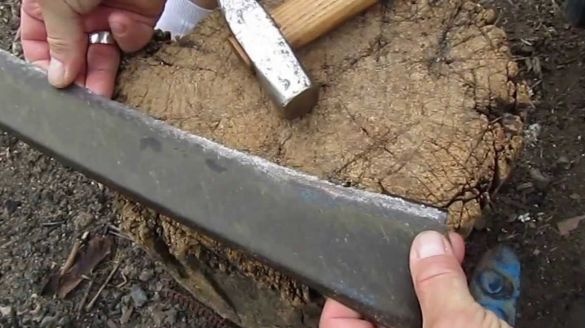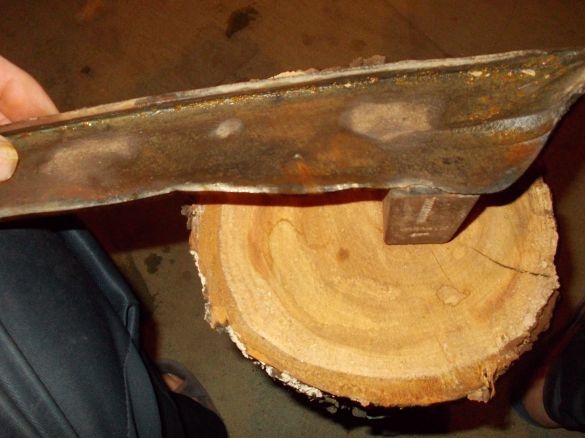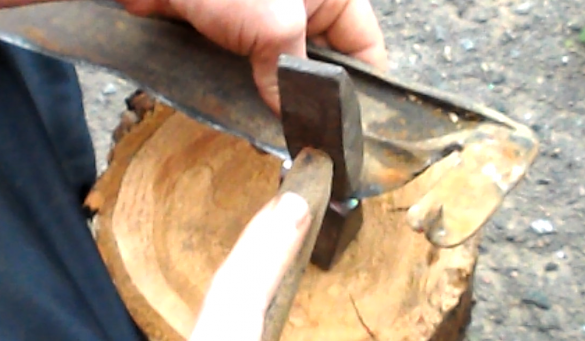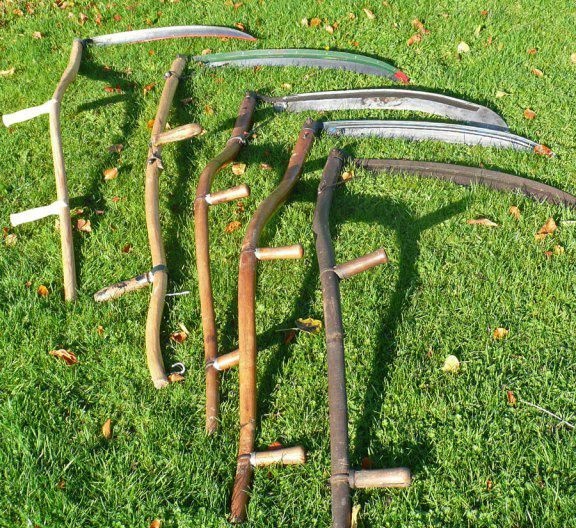
Often, when a not very experienced person in the field of agriculture undertakes to mow the grass, he notices that the scythe does not mow the grass, but simply binds it. At the same time, great efforts must be made to at least somehow mow down the treasured site. An interesting fact is that sharpening the braid does not give a significant result. The secret lies in the thickness of the cutting blade, the thinner it is, the easier it will be to mow the grass. In other words, the scythe must cut the grass like a razor. It is in order to make the blade of the braid thinner, it is beaten off. The advantage of this method is that during impacts the metal becomes stronger and a kind of hardening also takes place. Thus, the braid will need to be sharpened not so often.
Materials and tools for beating braids:
1. The hammer. Most importantly, its working surfaces should be perfectly even. If the hammer has recesses, nicks and other defects, they must be aligned. Otherwise, the braid will be repulsed not qualitatively.
2. Grandma. Its working surface should also be perfectly flat. If the grandmother is homemade (and they are often made from a file), notches form on it over time. They must be removed before work.
3. A stump or other support. Typically, the headstock is inserted into the stump, but you can come up with another support.
4. A can of water.
5. Scythe
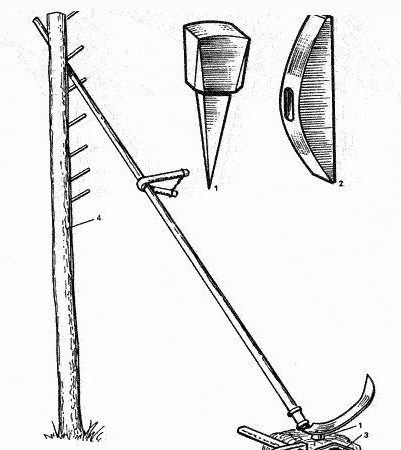
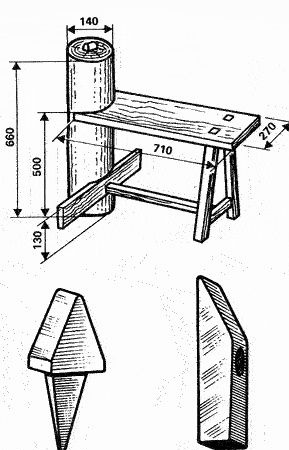
The process of beating braids:
Step one. Preparation of the braid and workplace
Before proceeding to beat, a braid knife is recommended to be placed in water. At the same time, a dark coating is formed on the metal, with the help of which it will be easier to monitor the beating process.
You also need to install the headstock in the stump and choose the desired height. The grandmother should not hang out, otherwise the braid can be easily ruined or even injured.
To work conveniently, you need to prepare a place where the master will sit. Since this is a rather long and painstaking process, it will be extremely difficult to do a beat while standing or squatting.
The grandmother must be positioned so that when beating the main part of the braid is on the right knee, if the person is right-handed.The height of the knees should coincide with the height of the headstock, here everything needs to be selected according to the height of the person. A bench is usually used for seating.
Step Two We beat off the scythe
The most important thing in this process is not to rush, otherwise the braid can be ruined. It often happens that after an improper repulsion, the braid simply breaks during operation.
You need to start beating from the heel. For this, the braid is conveniently placed on the knee, and the other part on the headstock. The edge of the scythe blade should clearly coincide with the edge of the jar, no overhangs should be allowed. Otherwise, the braid will be wavy after beating. You need to hit the braid with duplicate strokes, while pulling the hammer slightly over yourself. When beating, you need to move the knife of the braid gradually, it is important not to miss the broken parts. During operation, the blade should be smooth, if this is not so, then in some place the blow was too weak and the metal did not flatten to the desired size.
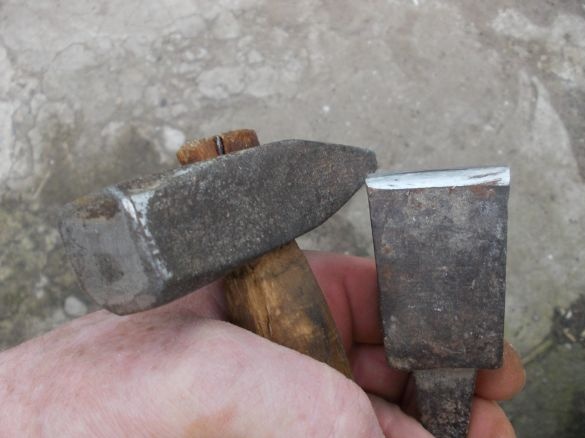
It is possible to understand that the metal is sufficiently beaten off by the way small cracks will form on the edges of the blade. This will indicate that the minimum thickness of the metal has been reached and it is no longer necessary to beat it further in this place. When one side of the braid is repelled, it is turned over to the other.
When beating, the hammer must be moistened in water, while in the place of impacts from the scythe a dark layer will be cleaned and the place of repulsion will be visible. After breaking off one side, the scythe knife is turned over and then the same procedure is carried out on the other.
Shocks should not be strong, it is better to make several weak than one strong. The hammer rises to a height of no more than 5 cm from the blade. Blows are made exclusively parallel to the blade of the knife.
As for the numbers, the maximum blade can be beat off to a width of not more than 3 mm, the optimal is considered to be 1.5-2.5 mm. Otherwise, the braid may break during operation.
Step Three The use of squanders when breaking a braid
For those who are massively engaged in braiding, it will be useful to get hold of a device such as braiding. When using this fixtures It’s very easy to beat off the scythe and anyone can handle it. Here you no longer need to monitor the width and constantly point the blade of the braid on the headstock. When the blade is installed in a squeegee, it abuts against a special support and thereby sets the optimal clearance for rebound. The master only needs to strike the headstock with a hammer and make sure that the braid beats more or less evenly.
The most difficult thing is to beat off such a braid that has never been beaten before, since the metal in it will be as thick as possible.
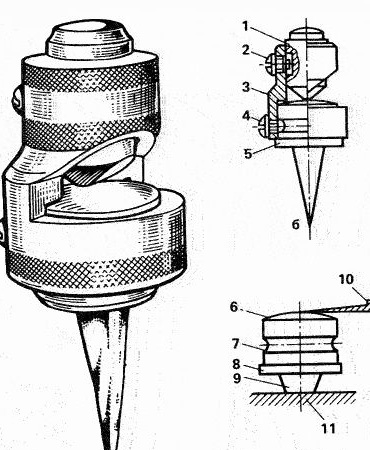
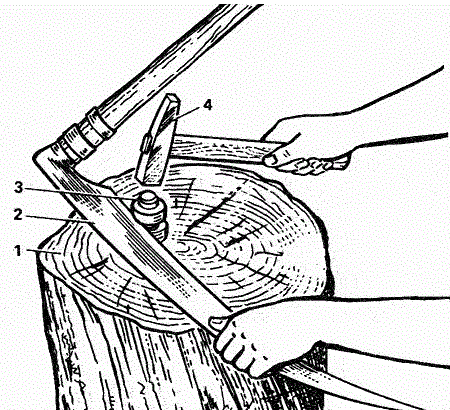
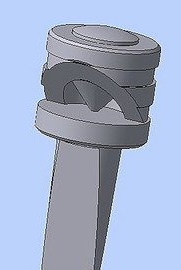
That, in fact, is all. After beating, the blade needs to be sharpened and after that you can start mowing the grass. If everything is done correctly, then during work it will immediately be felt that the scythe cuts the grass, rather than tearing it and crushing it, as it was before. At the same time, it will be easy to mow, and the grass will mow down to the very root, of course, much depends on the mowing here.

